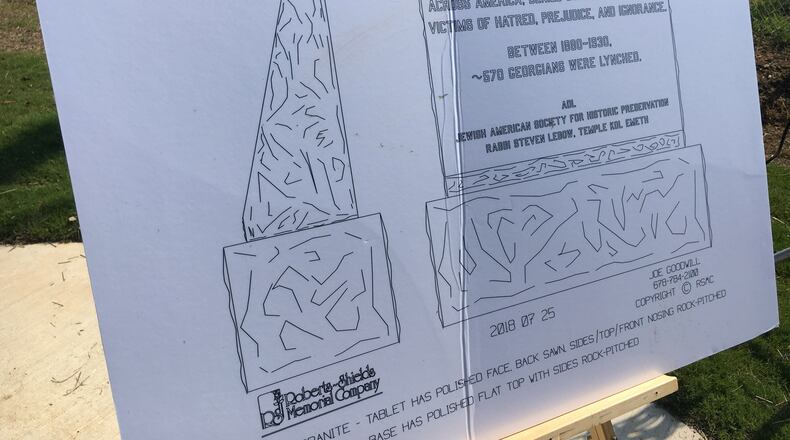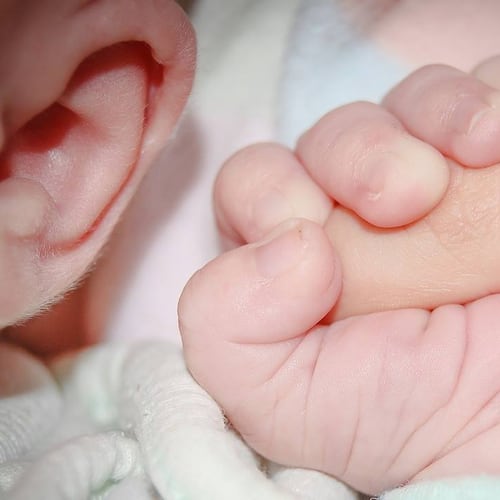Last Thursday, I helped lead the memorial service for Leo Frank, the victim of a lynching here in Marietta on August 17, 1915.
At that memorial service held at the new site of the Frank memorial, political figures and members of the judiciary, clergymen and congregants, took a few moments to bow our heads in memory of the grotesque legacy of the Frank lynching.
Having said our prayers and having called for Frank’s ultimate exoneration we all went on our way, telling ourselves that that by remembering the lynching of Leo Frank we have discharged our responsibilities to history.
Unfortunately, the emphasis that we (myself included) sometimes place on Frank’s lynching ignores and obscures the deeper fact that there were two innocent victims in the Frank case and that only one of them was Leo Frank.
The first, and equally tragic, victim was the murdered 13-year-old factory worker, Mary Phagan.
The reader may recall that on an April night in 1913, the janitor of the National Pencil Factory, Newt Lee, called the Atlanta police department.
“A little girl’s been murdered,” he told them, a simple enough sentence that would monopolize national headlines for close to two years.
Just imagine (God forbid) that you are that family that has received word that not only is your young daughter dead , but she has also been brutally murdered.
There is only one extant photograph of the Phagan/Coleman family at Mary’s funeral. As one would have imagined, they look stunned. Standing at the grave of a child they are in shock.
Everyone knows that the death of a child goes against the natural order. How can we not feel a darkness deeper than sorrow, when we stare into the eyes of Mary’s family?
Any mother who has ever carried a child in her womb, nursed a baby at her breast, pushed a toddler in her stroller and any father who has ever taught a son to throw a ball, or bait a hook or ride a bike can barely imagine the pain that the Phagan/Coleman family must have felt that day when they laid her to rest in the Confederate Cemetery off of Powder Springs Road.
And if a person tries to understand the Leo Frank case, in its entirety, then there are two things that contributed to the violence that culminated in the Frank lynching on Sheriff Frey’s land.
The first was Mary Phagan’s terrible murder.
But the second factor in the Marietta lynching has to do with the American South and of the terrible legacy and aftermath of the Civil War.
Northerners often have no real interest in the Civil War and hence no understanding of the byzantine complexities of life in the South, both before and after the war.
While we are all grateful for the end of the enslavement of African-Americans, there is no escaping the fact that the Northern victory represents the apex of a “scorched earth policy”. It wasn’t enough that the South be defeated, the North must have reasoned. It had to be destroyed, brick by brick, crop by crop, farm by farm.
By the end of the war in 1865, the South could be assured that the next 50 years would be years of impoverishment. Twenty-five percent of young Southern men had been killed in the war. Not just plantations but average southern farms were burned to the ground — only after Northern soldiers had eaten or destroyed any produce they could find.
Even with Reconstruction, the life of average black men and women was often not much better than before the war. The enslavement of black men and women was replaced by an equally repugnant segregation and Jim Crow laws.
For many years after the Civil War, the black community in the South continued to live lives furnished only with poverty, chained now by the institution of becoming tenant farmers.
And then, for 50 years after the end of the war, the impoverished African-American community was joined by an unlikely complement; impoverished white tenant farmers.
The proud groups of Scotch-Irish, Germans, French, and Dutch who had colonized the South in the previous century were now reduced to penury. The once-proud South had been brought low.
It is impossible for me to summon up any real pity for those Southerners who were former slave owners, but as an historian I can see exactly what must have happened.
When the slave-supported agrarian society of the South was demolished there was nothing to replace its previous economy.
I am sure that whites in the South continued to have what sociologists now call “white privilege”. Even so, poor whites now saw themselves as they had always seen black men. Now poor whites saw themselves as poor, ignorant, and without any real political power or social influence.
When the bottom dropped out of the cotton market small family farms could no longer support themselves. Their imagined worst was now a reality. Families had to send their young daughters to ill-paid work in dirty urban factories.
Could there be anything more humiliating than telling your child she has to work 10 hours a day in order to put food on the table for the family to survive?
From our vantage point now, a Mariettan in 1913 must have looked at the Southern landscape as having been denuded by the North. Their cities (Atlanta, Columbia, Charleston) had been burned to the ground. With no sense of hyperbole, a Southerner must have looked at the South as having been raped.
And now, with that violent image of abuse in mind, we see what must have motivated the mob from Marietta the day of Frank’s lynching. The confluence of the South feeling that it had been collectively raped and then the (unsubstantiated) report that the little girl had been raped, led to the perfect storm, as it were.
Southerners, understandably, resented the fact that Northerners had moved south to make their fortune. Georgians felt ashamed that they had to send their little girls to factory work. And Mariettans, goaded on by publisher Thomas E. Watson, readied themselves for a lynching, motivated by an ill-conceived notion of reclaiming their previous power.
After all, one of their children had been deflowered by a Northerner, just as they imagined that the North had deflowered Southern society for years and years!
In any case, the most important thing to remember is that Mary Phagan was a little girl. She was turned into a symbol when the revived Klan called themselves “The Knights of Mary Phagan.”
Nothing can excuse what the lynch mob did in Marietta that day, but even the coldest of hearts can grasp that the murder of a child might motivate a citizenry to evil thoughts and deeds that they might not normally consider.
At the end of the day, though, Mary Phagan was not a mere symbol of the “New South” confronting the “Old South.”
She was somebody’s sister, somebody’s niece, somebody’s friend and most importantly of all;
Mary Phagan was somebody’s child.
So perhaps in the midst of calling for a “newer South”, praying for justice and for the exoneration of Leo Frank, we should also pause respectfully for a moment, in memory of the first victim of the Leo Frank case:
Little Mary Phagan.
Steven Lebow is senior Rabbi of a Marietta synagogue.
About the Author
Keep Reading
The Latest
Featured



